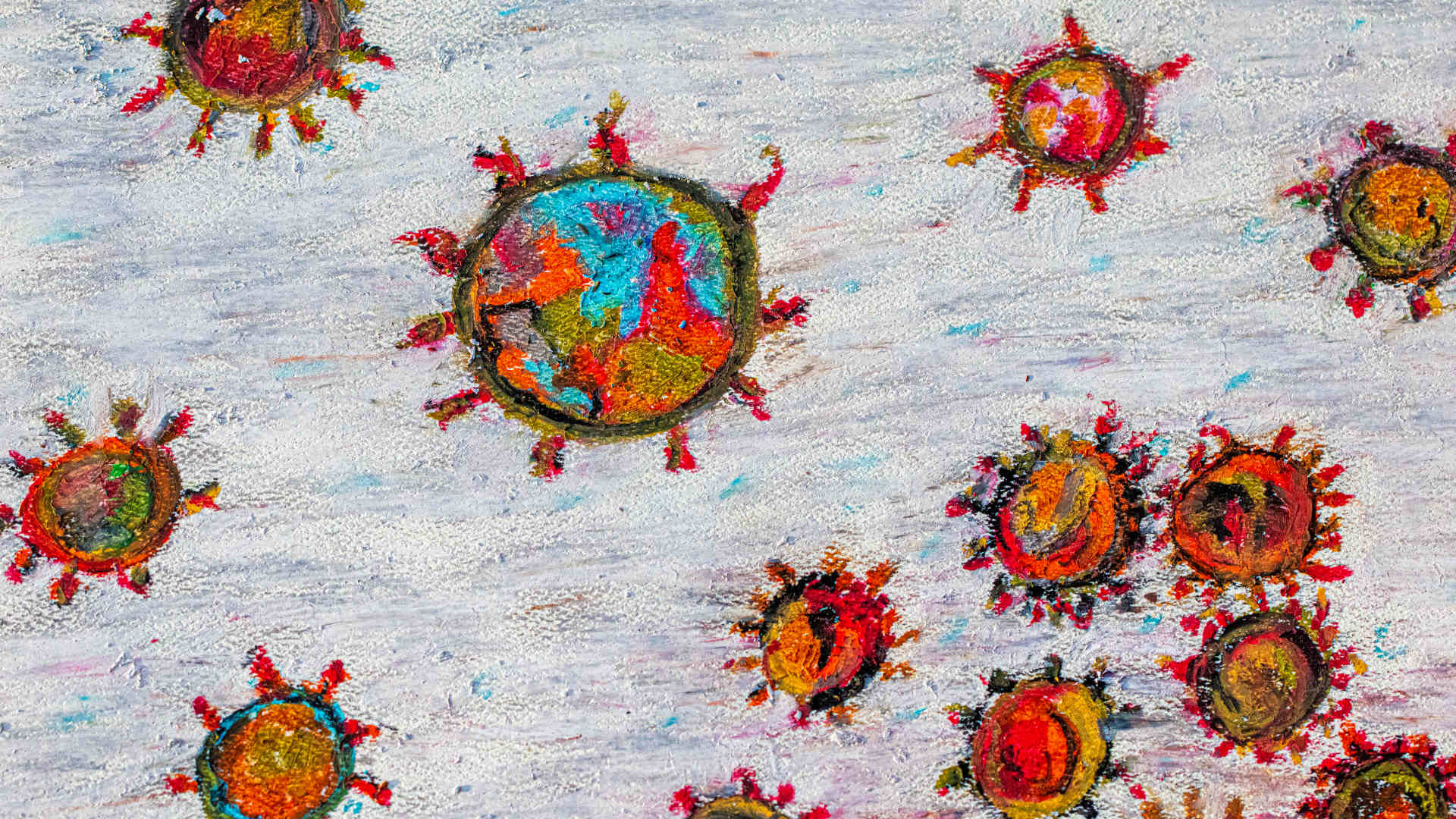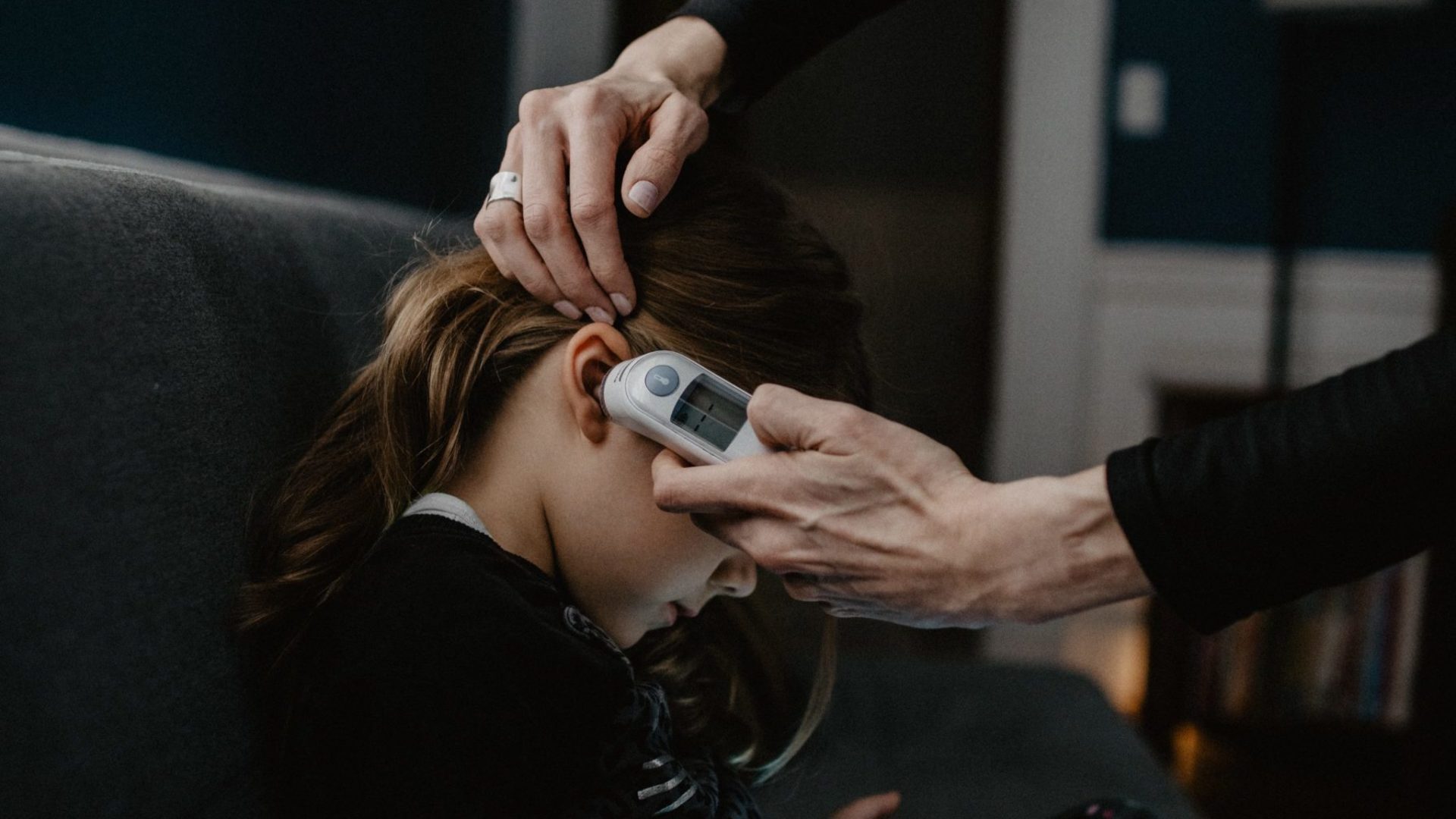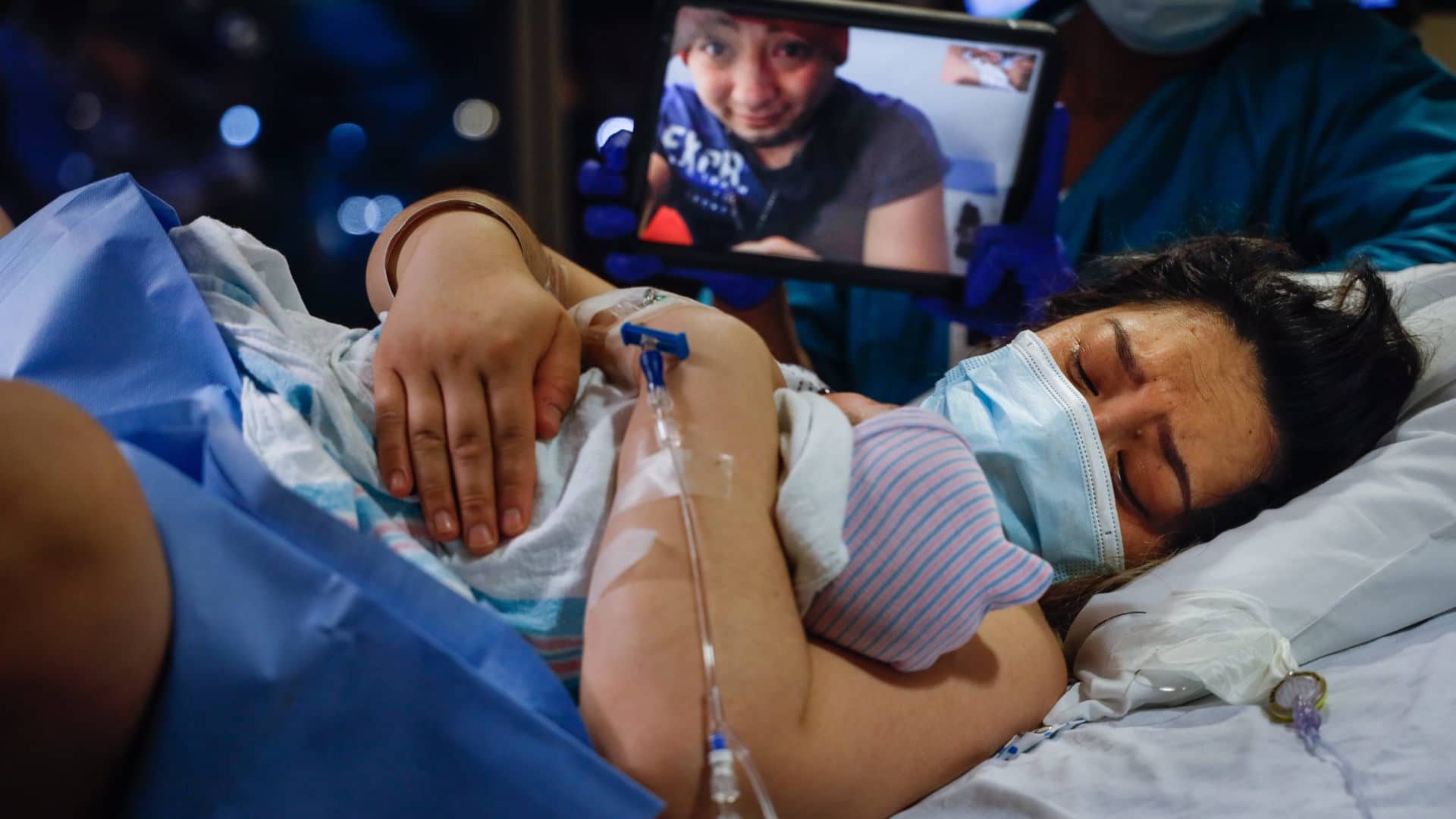Do a Quarter of All Children Really Get Long Covid?
How often do kids develop long Covid after a Covid-19 infection? Last June, as Omicron swept the United States, researchers published an alarming estimate: around 25 percent.
Long Covid can be debilitating, and such figures have fueled warnings about the risks of Covid-19 for kids. “More than a quarter of kids who get Covid-19 may develop long-term symptoms,” CNN reported earlier this year, citing the June study. The same figure comes up in interim guidance on post-Covid symptoms from the American Academy of Pediatrics, alongside other estimates.
“About 20-30% of children who get COVID-19 will have long COVID,” warns UC Davis Health, a major academic hospital system in California, on its website.
If those estimates are accurate, roughly 16 million children in the U.S. alone may have suffered from long Covid.
Other experts, often reviewing similar data, have reached sharply different conclusions. “Anybody with any experience with children and SARS-CoV-2 knows very clearly that it’s not one in four children,” said Shamez Ladhani, a pediatric infectious disease specialist at St. George’s Hospital in London and a collaborator on a major British government-funded study of long Covid in children.
Ladhani and other researchers agree it’s clear that some children struggle with long-lasting symptoms after having Covid-19. But the question is: How many? Three years into the pandemic, the discrepancies in experts’ answers reflect the ongoing challenge of defining and tracking a little-understood condition.
Patient advocates have sometimes bristled at questions about the frequency of long Covid, suggesting that such a narrow view can miss the suffering behind the numbers. Still, the topic has been a focus of ongoing study in both adults and children, and the outcome can produce wide-ranging views of the pandemic’s effects on kids: Is long Covid in children a silent epidemic? A challenging but very rare condition? Or something in between?
The answer could affect how parents judge the risks of Covid-19. Some researchers and public health experts have suggested it may also have implications for public policy. The issue could have clinical implications, too: Some pediatricians worry that providers will turn too quickly to long Covid as a diagnosis — and, in the process, overlook other conditions that are the actual cause of some kids’ symptoms.
Amid that uncertainty, some researchers suggest their colleagues have produced estimates that overstate the risks. “We’re measuring Covid and transmission in schools,” said Ladhani. “And we do not see the long Covid that is being portrayed from the media and the social media.”
In the early months of the pandemic, writer Megan E. Doherty was among the first U.S. journalists to document lasting Covid symptoms in children. In a story for Undark published in September 2020, Doherty reported on more than two dozen children who were experiencing lasting symptoms after apparent Covid-19 infections, including lingering fever and fatigue.
“Never in a million years could I imagine that four months later our bodies are still trying to recover,” one parent told Undark at the time, describing the ongoing symptoms both she and her 7-year-old son were experiencing.
In the months since, thousands of researchers have turned their attention to long Covid in adults — and, to a lesser extent, in children. (Although there are also debates over the frequency of long Covid in adults, severe Covid-19 is much rarer in kids, and many experts say that applies to long Covid as well.)
While the term “long Covid” can conjure up images of debilitating fatigue, it technically refers to a range of conditions. Definitions can vary. In February, the World Health Organization issued an official definition for what it terms “post Covid-19 condition in children and adolescents.” The category applies to symptoms that last at least two months, and that first appear within three months of a Covid-19 infection.
Those symptoms, the WHO definition adds, “generally have an impact on everyday functioning.”
The list of possible symptoms is broad, and can include fatigue, anxiety, and altered smell.
Early attempts to track the prevalence of long Covid in children often followed a straightforward setup: Researchers would contact the families of kids who had tested positive for Covid-19 weeks or months earlier and ask how they were feeling. One small study in Italy, conducted during the first year of the pandemic, reported that two-thirds of kids had “at least one persisting symptom” when contacted 60 to 120 days after their diagnosis.
But how to interpret that data, experts say, is unclear. One problem is that studies use a range of definitions for long Covid. Those definitions may not always line up with popular conceptions of the condition, and they often include mild symptoms that don’t impact daily function. Depending on the study, a child who experiences anxiety, a child who has temporarily lost their sense of taste, and a child undergoing debilitating fatigue and shortness of breath may all be classed as long Covid sufferers.
Another challenge is that, even under normal conditions, kids feel sick all the time. “A lot of the symptoms that are attributed to long Covid are extremely common among children,” said Maren Johanne Heilskov Rytter, a pediatrician and a clinical lecturer at the University of Copenhagen who has written about long Covid and kids. Headache, stomach pain, mood changes: All of that “happens very frequently,” she said, and can occur “regardless of whether they had Covid or not.” (Rytter also said she has seen a case in which physicians overlooked a serious condition for a long time after misdiagnosing it as long Covid.)
So, to what extent were all those symptoms direct consequences of a Covid-19 infection, rather than typical aches and pains?
To address that issue, by 2021, several major studies were underway that included control groups. In this approach, researchers examine the health of children who have tested positive for Covid-19. Then they compare those results to the health of demographically similar kids who have never tested positive for the virus. (Most of these studies analyze data from before the Omicron wave; it’s now much more difficult to find children who have never caught Covid-19.)
One such study took place in Denmark, where researchers could take advantage of unusually favorable study conditions: The country had exceptionally high rates of Covid-19 testing, and national recordkeeping systems made it possible for researchers to access test results and send questionnaires directly to Danish citizens.
The Danish team found that nearly 62 percent of children with a positive test reported one lingering symptom in the months afterward — but so did 57 percent of the kids who had never received a Covid-19 diagnosis.
Many similarly designed studies — including multiple studies in the U.S. — have also suggested that kids with a Covid-19 diagnosis are at a modestly higher risk of exhibiting certain symptoms in the months after their infection. The findings, though, can be surprising. The Danish study found that adolescents who had Covid-19 actually scored higher on a questionnaire designed to measure overall quality of life. One August 2022 study from the U.S. Centers for Disease Control and Prevention found that although children who had Covid-19 were more likely to have certain health issues, such as rare heart conditions, compared to a control group, they were also generally less likely to report some symptoms associated with long Covid, including “respiratory signs and symptoms, symptoms of mental conditions, muscle disorders, neurological conditions, anxiety and fear-related disorders, mood disorders, and sleeping disorders.”
More recently, researchers at the KI Research Institute, a health research nonprofit, published an analysis of medical data for 1.9 million people in Israel, from infants to seniors, who had not been hospitalized for Covid-19. Among children and adolescents, the team found few statistically significant differences between kids who had tested positive and those who had not. The symptoms that did appear more often among young people who had caught Covid-19 — namely shortness of breath, loss of taste and smell, and physical weakness, mostly in older kids — mostly seemed to resolve within a year.
At times, researchers and advocates looking at the same data can come to different conclusions.
The CLoCk Study is a major effort in the United Kingdom that, among other goals, aims to estimate the prevalence of long Covid in children. Like other controlled studies, CLoCk compares populations of children and adolescents who have tested positive for Covid-19 with those who have not. Unlike other studies, CLoCk researchers follow up multiple times over the course of two years to track how symptoms change over time.
Based on the study, Long Covid Kids, a U.K.-based advocacy group, estimates that “14% of children can go on to develop long Covid.”
Snehal Pinto Pereira, a statistical epidemiologist at University College London, said the data indicates that Covid-19 may have persistent, negative effects on some children’s health. “At all time points — at time of testing, six months later, 12 months later, all time points — children and young people who tested positive for Covid-19 had more symptoms than those who tested negative,” she said. “So, while they’re both showing symptoms, the positives are always having more symptoms than the negatives.”
At the same time, Pinto Pereira said, the CLoCk data suggests that those symptoms are generally mild. “The prevalence of the children who sought help for their symptoms, like going to a GP” — a general practitioner — is “very low,” she said.
Ladhani, the pediatric infectious disease specialist, is one of Pinto Pereira’s collaborators on the CLoCk study. He was hesitant to ascribe all those symptoms to Covid-19. “We’re just measuring everything under the sun, and then we’re trying to figure out whether it is or isn’t related to the virus,” he said. Do elevated risks for relatively mild and common symptoms actually reflect a public health issue? And are they necessarily caused by a Covid-19 infection? Maybe not, according to Ladhani: “Those differences could easily be explained by methodological issues, and by surveillance issues.”
Some researchers argue that the kind of study design used by the CLoCK team may be underestimating the rate of long Covid. They question the quality of the control groups — whether some of those kids had the virus but just didn’t take a test or didn’t test positive. “They were not good controls,” said Sonia Villapol, a neurosurgery expert at Houston Methodist Hospital and Weill Cornell Medicine, and one of the authors of the paper estimating that 25 percent of children develop long Covid.
Other researchers acknowledge the issue but say it does not explain the pattern. Ladhani notes that, in the CLoCk Study, the control group shows much lower rates of loss of taste and smell than the group that tested positive for Covid-19 — one sign of a real difference between the two groups.
In an email to Undark, Barak Mizrahi, a computational health researcher and the lead author of the Israeli study, said the unusually high rates of Covid-19 testing in Israel during the study period, combined with a low rate of overall infection in the country, lead the team to feel confident in their data. “Even if there were undetected infections in the control group,” he wrote, “we would expect them to be very low.”
Translating all those studies into a single estimate of long Covid’s toll on children can be challenging. Among the more influential — but controversial — was the study that Villapol and her colleagues published in June, concluding that one-quarter of kids with Covid-19 will go on to have long Covid. (The study’s lead author is a scientist at Novartis Pharmaceuticals, which has manufactured some Covid-19 vaccines.) To produce that estimate, the team drew on the results of 21 studies — including several looking at patients hospitalized with Covid-19, and many studies that did not have a control group.
Some researchers have criticized those methods, saying the data could have been skewed by an overrepresentation of sicker kids, and by picking up on general symptoms that may have had no connection to Covid-19. The review “should never have been published,” said Ladhani.
Villapol acknowledged that the figure was high, in part, she said, “because we’re reporting every single symptom, even if it’s not so debilitating.” But she defended the approach, suggesting the paper had served a larger goal. Kids “are not immune” to the worst effects of Covid-19, she said. “That is the major thing that we wanted to show, that the kids are not immune.”
In September, the American Academy of Pediatrics updated its interim guidance on long-lasting Covid-19 symptoms in children and adolescents, including a discussion of the prevalence. The AAP acknowledged the difficulty in pinning down a number. Citing the June meta-analysis, the guidance says rates could be as high as one-in-four, but says the likelier estimate is between 2 and 10 percent of U.S. kids.
Alexandra Yonts, a pediatric infectious disease specialist at Children’s National Hospital in Washington, D.C., contributed to the guidelines. The 25 percent figure, she said, is “a very generous number” that takes into account a lot of milder symptoms — outcomes, she added, “that maybe aren’t the thing that we’re the most worried about, from a clinical perspective.” More recent studies, Yonts said, indicate that something in the range of “5 percent or less” of children infected with Covid-19 go on to develop longer-lasting symptoms.
Still, she stressed, kids can get long Covid; not all are receiving the care they need; and case rates and statistics can seem less relevant to families navigating a challenging condition. “On my end of things, seeing them once they already have long Covid, they don’t care as much about the prevalence,” said Yonts, who oversees a program at Children’s National that serves long Covid patients. Considering how widely Covid-19 has spread, if even just 0.1 percent of children developed long Covid, she said, that would still be a lot of cases — tens of thousands in the United States alone.
“Even if the estimates are very low, and the risk in general is very low, it is still there,” she said.
Ladhani, in the U.K., worries that inflated estimates of pediatric long Covid may actually make it harder to identify and serve the kids who do need support. “If we don’t stop doing the studies that don’t help us, then we won’t be able to genuinely identify the kids who really are struggling after Covid,” he said, “so that we can provide care for them and help them get better.”













Comments are automatically closed one year after article publication. Archived comments are below.
A separation needs to be made between kids who were Jabbed,and then how many times, and kids who were not. Otherwise Long Covid may be side effects from the genetic treatment for Covid which is called a vaccine but which is not a traditional vaccine. If it is found there is no difference Jabbed or Unjabbed then psychosomatic factors need to be addressed.